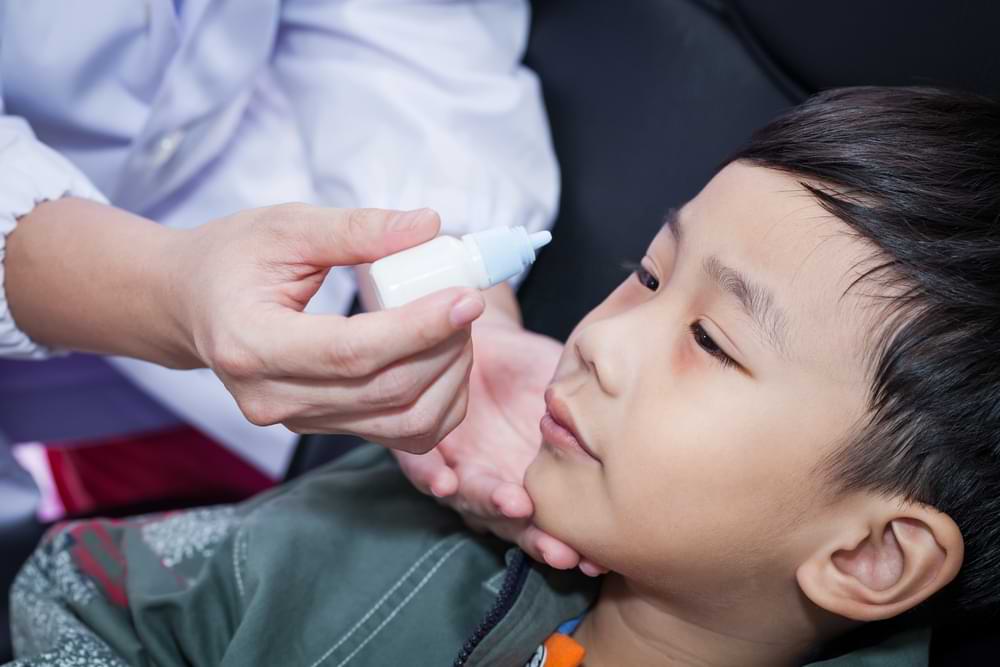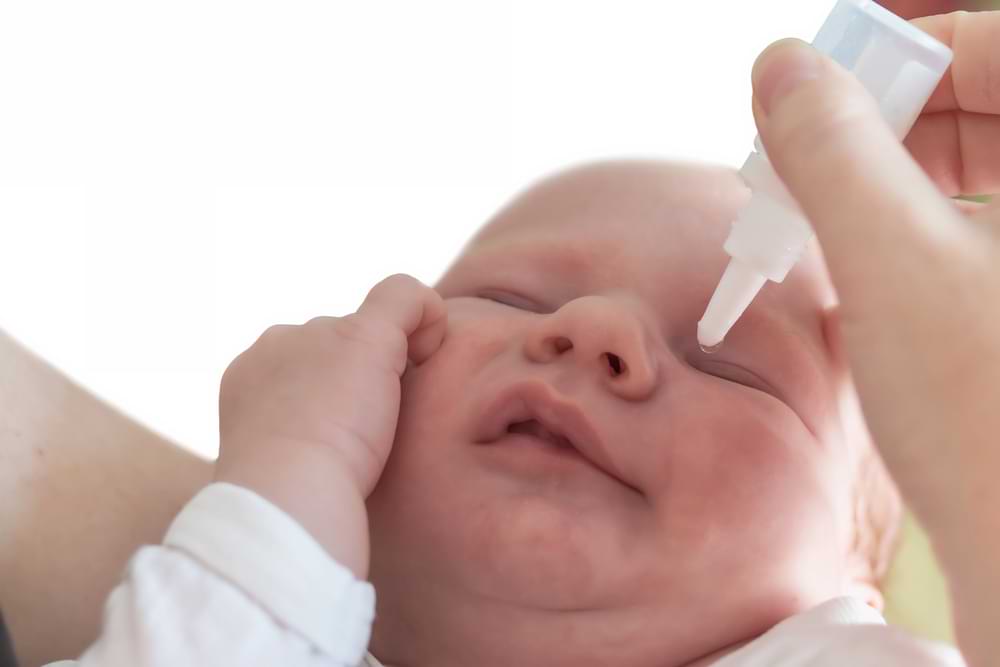Eye Drops for Infants and Toddlers

How do you know if your baby’s eye irritation is something minor or something that needs proper treatment? When should eye drops be used, and which ones are actually safe for young children?
I’m Minh Van Tran, the Principal Optometrist and owner of VisionPro Optometrists. I’ve been caring for children’s vision in Melbourne since 2008, and over the years, I’ve seen just how overwhelming it can be for parents trying to figure out what’s best for their child’s eyes. It’s not always obvious when eye drops are needed — and even less clear which ones to trust.
At VisionPro, I work closely with infants and toddlers every week, helping families manage everything from conjunctivitis to early signs of myopia. My approach is practical, evidence-based, and focused on making treatment as safe and effective as possible — especially when it comes to young children.
Key Takeaways
- Eye drops for infants and toddlers must always be prescribed or approved by an optometrist.
- Common conditions like conjunctivitis, blocked tear ducts, allergies, myopia, and amblyopia often require different types of drops.
- Not all lubricating or allergy drops are safe for toddlers.
Eye Conditions in Young Children
As a parent, it can feel like you need eyes in the back of your head. In my long optometry career of caring for Melbourne families, I’ve seen just how common eye conditions can be with young kids. Conjunctivitis often takes the spotlight, and it doesn’t matter if it’s viral or bacterial — both can leave your baby’s eyes red, sticky, and uncomfortable. Then you’ve got allergic reactions, where pollen or dust can cause constant rubbing and irritation. Blocked tear ducts are another one to watch for, especially in newborns, causing watery discharge that doesn’t clear. And of course, myopia and amblyopia can quietly creep in during toddlerhood if left unchecked.
When eye drops come into play, it’s usually because they’re the best tool to clear infections, ease symptoms, or even support healthy eye development. What I prescribe always depends on the child’s age and the exact issue we’re dealing with.
Types Of Eye Drops Suitable for Infants and Toddlers
Which eye drops are actually safe for babies and toddlers and when should they be used?
- Antibiotic Drops and Ointments: For newborns, erythromycin ointment is a reliable option to prevent infections acquired during birth. For bacterial conjunctivitis in older babies and toddlers, I prescribe chloramphenicol — but only after confirming the diagnosis.
- Drops for Long-Term Vision Issues: Atropine is useful for managing myopia and amblyopia. It can slow short-sightedness and support visual development in cases of lazy eye, but should only be used under clinical supervision.
- Allergy Relief Drops: Antihistamine drops can reduce itchiness and redness caused by allergies. I avoid decongestants in young children due to the risk of side effects and limited benefit.
- Lubricating Drops: for Irritation For dry or irritated eyes, I recommend preservative-free lubricating drops. They’re gentle, non-irritating, and ideal for sensitive eyes.
If you’re unsure, get advice before reaching for the bottle.

Safety and Best Practices for Use
How can you be sure you’re using eye drops correctly on your child?
- Always get professional advice
Never self-prescribe, even with over-the-counter products. Children’s eyes are sensitive, and what works for an adult may not be suitable (or safe) for them. - Follow correct application technique
Wash your hands thoroughly before handling any medication. Gently tilt your child’s head back and pull down the lower eyelid to form a small pocket. One drop is enough — more won’t make it work better. - Reduce drainage after applying drops
Press the inner corner of the eye lightly for about 30 seconds. This prevents the drop from draining into the nose, where it won’t do any good.
Don’t guess, don’t wing it — and please, NEVER use adult drops on little eyes!
How to Put Eye Drops in a Toddler’s Eyes (Step-by-Step)
- Wash your hands
Prevents introducing germs to your child’s eyes. - Check the expiry date
Ensure the drops are still safe and effective. - Remove the cap carefully
Place it on a clean tissue to avoid contamination. - Inspect the bottle tip
If there’s yellow/brown crust, discard the bottle (it may be contaminated). - Position your child securely
Lay them on their back between your legs.
Gently pin their arms under your legs to prevent sudden movements.
Stabilize their head with your thighs. - Choose your drop method:
-If eyelids can be opened:
Use fingers near the eyelashes to gently open the eye and apply one drop.
-If eyes are tightly shut:
Place 1–2 drops at the inner corner of the closed eye — the drop will go in when they blink. - Hold the bottle close
Avoid holding it high above the eye to prevent startling your child. - Blink the eyelids
Help your child blink or gently open/close their eyelids to spread the drop. - Dab gently with tissue
Wipe away any excess liquid without rubbing the eyes. - Recap and store the bottle properly
Some drops may need refrigeration — check the label.
If you’d like a visual demonstration of how to apply eye drops for small children, watch the following video by Dr. Neal Guymon on his Dr EyeGuy YouTube channel.
Eye Drop Use at VisionPro Optometrists
Having a bunch of strangers peering at your eyes can be an intimidating experience for little ones. That’s exactly why, at VisionPro, we’ve created an environment that’s calm, welcoming, and completely kid-friendly. Babies and toddlers can sense when things feel tense. I’ve made sure our process feels less like a medical check-up and more like a gentle chat with someone who understands children.
When we use eye drops here, it’s never a guess. I only prescribe them when they’re necessary and safe. Melbourne can be a nightmare during pollen season, and I see a lot of red, itchy eyes needing proper care.
With years of experience in paediatric optometry, I know how to make the experience as stress-free as possible — for both you and your child. I monitor how their eyes respond over time and adjust treatment if needed.
You don’t need to do this alone. That’s what we’re here for.
How to Tell If Your Child Needs Eye Drops
What clues should parents watch for before picking up the phone?
- Visible irritation or discharge
Redness, swelling, sticky discharge or crust, especially first thing in the morning, are common signs of infection or inflammation. Persistent rubbing is also a red flag that something’s not right. - Sensitivity or changes in behaviour
If your child suddenly avoids bright light or blinks excessively, it could signal eye discomfort or visual strain. Don’t dismiss it as a phase; it’s often a clue that they’re struggling to see clearly. - Focusing difficulties or squinting
Difficulty tracking objects, frequent squinting, or trouble focusing on people or toys might indicate underlying vision problems such as myopia or amblyopia. These issues respond best to early treatment.
A proper exam helps identify the right treatment and avoids unnecessary or incorrect use of medication. If you’re unsure, book in. A quick check now can prevent bigger problems later.
Frequently Asked Questions About Infant and Toddler Eye Drops
Which Eye Drops are Safe for Toddlers?
Only those made specifically for young children — and even then, they should always be used under medical supervision. I never recommend using adult drops or anything off the shelf without proper advice. What’s safe for you isn’t necessarily safe for your toddler’s eyes.
Which Eye Drops are Best for Infants?
For newborns or babies under one, erythromycin is a trusted option, especially for infections. If a child has more specific conditions like amblyopia or bacterial conjunctivitis, I might prescribe atropine or chloramphenicol — but only after a full eye assessment.
Can Kids Use Systane Eye Drops?
Older kids, yes — but toddlers? That depends. I only suggest Systane if there’s a clear reason and no safer alternative. Even preservative-free options need caution at that age.
Can You Buy Antibiotic Eye Drops Over the Counter?
No, not in Australia. Antibiotic drops like chloramphenicol require a prescription. It’s the safest way to make sure they’re being used correctly and for the right condition.
Final Thoughts
Eye conditions in babies and toddlers can be tricky — and using the wrong eye drops can make things worse instead of better. That’s why it’s so important to get the right diagnosis and the right treatment.
If your child is showing any of the symptoms mentioned, don’t wait or guess. Book in with someone who understands how to treat young eyes properly. It’s a simple step that can make a lifelong difference to their vision and comfort.
You can call us on (03) 9687 8787 for Footscray, (03) 9364 5509 for St Albans, (03) 9600 1142 for Sunshine OR arrange an appointment using the “Book An Appointment” button in the navigation menu. All our practices are easily accessible, with nearby parking and public transport options available.

Minh gained his Bachelor of Optometry in 2000, and his Certificate in Ocular Therapeutics (ACO) in 2016.
He started VisionPro Optometrists in 2008 and has been Principal Optometrist ever since, working in both the Footscray and the St Albans practices.
Minh is a member of Optometrist Association Australia and the ACO. He always strives to achieve the highest standard of professionalism when delivering eyecare to all his patients.
Minh’s special areas of interest include ocular diseases and management, children’s vision and contact lens fitting. Minh enjoys travelling and reading in his spare time.
